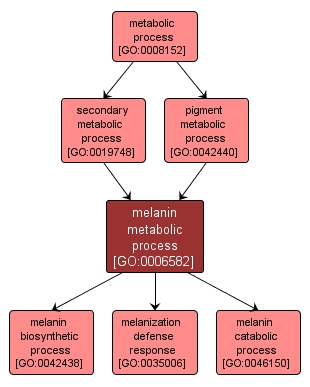| Desc: |
The chemical reactions and pathways involving melanins, pigments largely of animal origin. High molecular weight polymers of indole quinone, they are irregular polymeric structures and are divided into three groups: allomelanins in the plant kingdom and eumelanins and phaeomelanins in the animal kingdom. |














